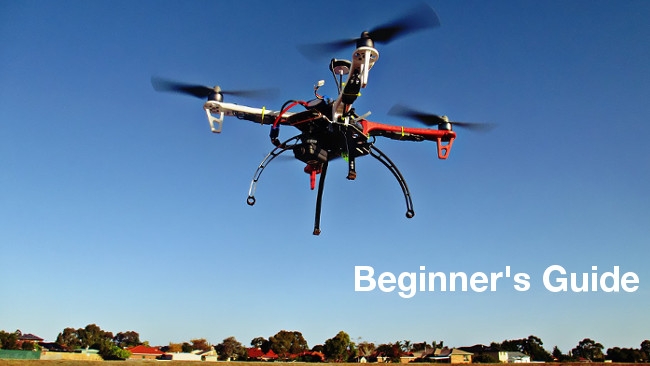
 Drone Beginner's Guide
Drone Beginner's Guide
We tend to assume that readers have at least a basic knowledge of drones for photography and video, but for anyone completely new to this idea, here's a nice, basic primer. By Liz Pekler.
Are you a professional photographer or shutterbug who wants to capture stunning aerial shots? Perhaps you've seen breathtaking aerial shots of mountains, coastlines and cityscapes and want to try something similar. Or maybe you've also heard about the recent advances in drone photography and want to purchase your own drone. Here are some things to keep in mind before you buy one.
What are Drones?
Drones are aircraft that operate without a human pilot onboard. They're also known as unmanned aerial vehicles (UAVs) and unmanned aircraft systems (UASs). Drones are typically controlled via ground-based remote controls. Some drones are fully autonomous, meaning they're controlled by onboard computers.
Drones sold to the public fall into two general categories:
1. Drones with built-in cameras (The built-in cameras are known as "onboard cameras.")
2. Drones that lack built-in cameras but can accommodate outboard cameras
While drones with onboard cameras allow photographers to live stream video footage (enabling photographers to observe real-time footage via LCDs and compose shots), onboard cameras tend to be of lower quality.
Fortunately, there are drones that come with high-end onboard cameras that can take detailed, high-quality photographs. Research the different drones and determine if the drone you're considering carries an onboard camera that fits your technical specs and features. You may also check online stores such as Adorama for drones that suit your photography skill level (i.e. amateur, enthusiast, or professional).
Additional Drone Photography Gear
Depending on your chosen drone and camera, you may need additional photography gear before you take to the skies. For example, if your drone does not come with an LCD that transmits live footage, you'll need to purchase a video transmitter that broadcasts real-time video footage.
You may also need to invest in the right UAV and remote control to better control your drone when it's airborne.
FAA Rules
If you're flying your drone in United States airspace, you'll need to abide by the rules set by the Federal Aviation Administration (FAA) (PDF download link HERE).
The FAA's rules regarding model aircraft operations are pretty straightforward:
- Operators of model aircraft (including drones) cannot fly their crafts more than 400 feet above the ground.
Crafts must be kept within sight at all times.
Crafts cannot be flown within three miles of an airport without first informing the airport's operating authorities or aircraft control tower.
Crafts should not fly near full-scale aircraft.
Crafts should be flown in sparsely populated areas.
The selected site should be away from noise-sensitive areas such as parks, schools, hospitals, and churches, etc.
Crafts should not be flown near spectators until the craft is flight tested and proven airworthy.
Also, drones should not be flown in areas that aren't well-lighted or are experiencing turbulent weather.
Register with the FAA Before Flying
As of December 21, 2015, the FAA requires owners "of small unmanned aircraft (UAS) weighing more than 0.55 pounds (250 grams) and less than 55 pounds (approximately 25 kilograms) including payloads such as on-board cameras" to register their aircraft with the FAA.
Owners of model aircraft for hobby/recreational purposes will only have to register once and may use the same identification number for all their model UASs.
Follow these simple tips and you'll soon be taking mind-blowing aerial photos like this:
 Image Source: Pixabay
Image Source: Pixabay
But before you take your drone out for a spin, fiddle around with it first without the camera attached. Familiarize yourself with the drone's controls and practice your landing (preferably in a wide, grassy field without crowds of people) until you get the hang of it. Remember, the better you are at handling your drone, the more precise aerial shots you'll be able to take with the camera.
Tags: Production


Comments